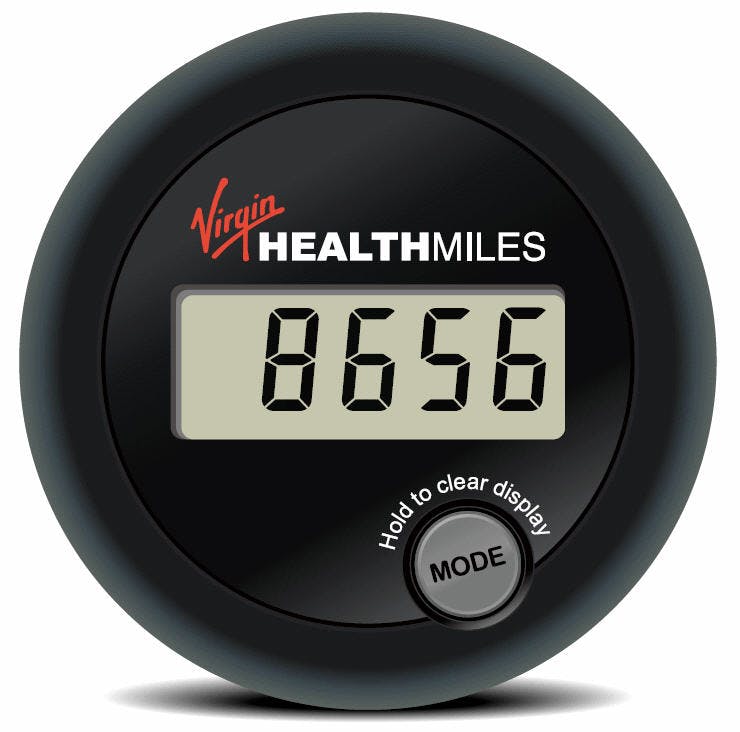Virgin HealthMiles offers “pay for performance” health and wellness solutions they call pay-for-prevention. Employees who use their system rack up personal rewards while their company does the same in the form of reduced medical costs and increased productivity.
Launched in 2006, Virgin HealthMiles is now offered by more than 120 industry leaders and reaches 700,000 employees in the U.S. — their domain. I spoke with Tom Abshire, Virgin HealthMiles senior vice president, marketing and member engagement, about why Virgin HealthMiles has been so successful.
Fran Melmed: Can you explain your philosophy?
Tom Abshire: In the U.S., companies are trying to balance culture, strategy and short-term goals to create healthier workforces and lower health care costs. we try to help them achieve these goals.
Studies show health care costs are increasingly affecting organizations’ profitability. Many projections point to health benefits costs soon equaling the costs of wages. companies and their employees can’t sustain these costs, and that’s where Virgin HealthMiles comes in. Our program focuses on prevention — helping employees get and stay healthy. Essentially, we’re applying a causal model to health care by helping employers reward their employees for healthy behaviors. We think of it as creating the equivalent of a “good driver” discount in health care.
Our program includes a variety of verifiable measurement devices, including an uploadable USB pedometer and biometric measurement stations, and a tailored program to increase daily physical activity. Given the disease prevention value, if you put physical activity into a bottle, it’d be a wonder drug. While it’s not the be all and end all, it’s a linchpin of a healthy lifestyle.
What do you get paid?
FM: Your approach is called pay-for-prevention. What do you pay me?
TA: Employees earn rewards for validated physical activity or biometric improvements.
We work with employers to develop specific incentives and rewards criteria that align with their goals. Our rewards range from a few hundred dollars to thousands. Typically, when you’re in the range of $1,500, you’re talking about health insurance premium reductions. Just a handful of our clients are giving away thousands. The average incentive is over $300.There are still a lot of water bottles with other programs we see in the market; they aren’t very compelling incentives.
FM: How do the incentives for physical activity or biometric improvements work?
TA: With our “levels program,” for example, everyone starts at level one and proceeds to level five. Level three involves getting 7,000 steps or 30 minutes of physical activity five days per week. Some people are more active. They’ll get to level four or five more quickly. Employees earn points by reaching the activity requirements for each level.
Our biometric measurement kiosks take body fat, weight and blood pressure. Employees get rewards for taking their measurements once per month. They also get bonus rewards for improving or reaching ideal biometric levels.
For a long time we’ve also provided rewards for employers’ other wellness tasks, like completion of a health risk assessment. We recently improved our process to offer an integrated incentives platform that aligns rewards for behaviors and outcomes with an employer’s additional programs, too.
Lots of different motivators at work
FM: How do you respond to those who say giving money saps intrinsic motivation?
TA: We bring our consumer roots to this problem. (Virgin HealthMiles is part of Sir Richard Branson’s Virgin Group.)
People are complex and motivated by different things at different points in time. We try to provide a rich environment with all of the recognized motivators, including team challenges, social, monetary.
A $500 incentive may be what’s needed to get you out of bed on a cold morning. Then again, I’m currently in a team competition. I have to pay $1 when I don’t reach my daily target. The social accountability’s helping me prioritize time today.
FM: How do you tie in these other motivational and behavioral strategies?
TA: We leverage tracking, measurement, incentives, information, nudges and social motivation.
With the levels design, employees know how they’re doing against their goal and what their incentives are for these activities. It’s also validated data, so it’s a true picture of what they’ve accomplished. A lot of programs today rely on self-reported data. We know from research when we recall and report our own data, it’s often “the better us.” With our uploadable USB pedometers and networked health measurement kiosks, employees are looking at how they’re actually doing.
In terms of social, we give people different opportunities to participate. We have about 1,000 different member-run challenges going on at any given time, most with five to seven other members participating. People are challenging their peer group. They design the challenge. We give employers different ways to build the challenge and then help them communicate and market it.
We also have member blogs where people post their stories. There’s a lot of new research showing that people are looking for stories of others like themselves — for motivation and to better understand the successful approaches that have worked for similar people.
We’re working with clients to determine whether they want to maintain privacy within their employee group or open and blend with others. It’s their choice. It’s a potentially growing trend, to work across industry, geography or businesses. This is a great opportunity to start a discussion on the impact of communities and social networks.
FM: Do you have plans to take Virgin HealthMiles global?
TA: Unfortunately, chronic diseases are fast becoming America’s “biggest export.” The global market will be attractive to us.
We work with global clients. But we’re proving our theories first here in the U.S.
This was originally published on Fran Melmed’s Free-Range Communication blog.
